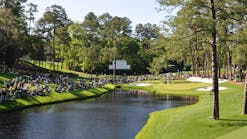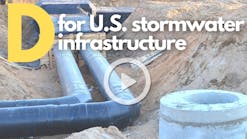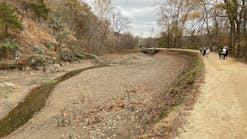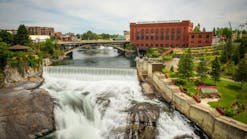Nutrient Separating Baffle Boxes Tackle Tough Water Pollution
Located on the east coast of Florida, the Indian River Lagoon is a vast watershed, rich in biodiversity and vitally important to the region’s economic engine. It helps to generate billions of dollars annually. A mix of saltwater from the Atlantic Ocean and freshwater from the land and tributaries that border the lagoon, the 2,284 square miles of watershed is home to many fish, birds, animals, and plants.
However, years of stormwater runoff containing fertilizer, chemicals, and trash polluted the 156-mile-long Indian River Lagoon and caused algal blooms and loss of seagrass, damaging the ecosystem’s productivity.
An Effective Solution
The City of Melbourne was responsible for one of the largest nutrient discharges into the lagoon and needed a solution to clean its stormwater runoff. In most cases, the existing septic systems were designed and installed more than 90 years ago, before modern design standards were implemented. Septic tanks have to be replaced every 25 to 30 years, and the city works with property owners near the Indian River Lagoon or its tributaries to remove these aging systems.
“Nutrient Separating Baffle Boxes have been a large part of the city’s efforts to clean the stormwater that enters the lagoon,” says Dani Straub, Melbourne’s project manager. “Not only do the baffle boxes trap debris, trash, and pollutants that flow off of streets and into storm drains; they also remove nitrogen and phosphorus — two of the harmful pollutants draining into the Indian River Lagoon.”
The NSBB, designed and manufactured by Oldcastle Infrastructure, can capture and treat on average five cubic feet of water per second. That is more than three million gallons of treated stormwater — about five Olympic swimming pools — per year. NSBB can handle extreme stormwater runoff and offers a comprehensive hydrodynamic separation system that treats the entire flow. The triple-chamber design allows for TSS removal over a wide range of particle sizes.
Traditional stormwater treatment methods, such as sedimentation ponds, require large tracts of land and many days for suspended solids to settle out. The NSBB is engineered to have a smaller footprint and more shallow profile.
Oldcastle, an engineered building solutions company, provides upfront design services, tightly controlled and quality-assured manufacturing capabilities, as well as onsite support during installation.
NSBB is designed for easy installation, integration, and ease of maintenance — essential qualities that help the City of Melbourne meet its clean water goals.
Baffle boxes are designed to slow down the velocity of water flowing through the system, allowing sediment to settle at the bottom of the box. Trash and pollutants can then be separated out and removed. NSBB’s patented screen, deflectors, and floating skimmer facilitate more time for separation and protect prior stages of treatment.
During a storm event, runoff filters through the NSBB’s screen, leaving pollutants behind. After the storm event, the captured trash and debris remain above the static water elevation (permanent pool). Captured organic debris does not break down and leach downstream.
As finer sediment filters through the screen, it falls into the lower sedimentation chambers, where proprietary turbulence deflectors prevent captured sediment from becoming resuspended. The three settling chambers target smaller sediments, associated nutrients, and particulate metals, among other pollutants. Some of the NSBBs in the City of Melbourne also incorporate a filtration media to increase nitrogen and phosphorus removal.
The floating skimmer traps hydrocarbons and other floating pollutants from exiting through the outflow pipe in addition to increasing the residence time in the system, resulting in increased TSS settling.
Designed with maintenance in mind, this self-contained multi-stage treatment system includes manholes and hinged screen doors that allow for easy access. The City of Melbourne sends out a vacuum truck to clean its 15 baffle boxes once a month and after large rain events.
“A healthy watershed is foundational to the wellbeing of our residents and our ecosystem,” says Straub. “The results are clear: The NSBB installations have removed pollutants from our water, resulting in a cleaner lagoon and the re-establishment of plants and animals in areas that were suffering from the effects of pollution.”
The need for stormwater control measures like treatment, storage, and infiltration continues to grow for Melbourne and other municipalities across the country.
“Our need to protect the Indian River Lagoon will only grow,” says Straub. “Our goal is to remove 90,000 pounds of total nitrogen per year and 27,000 pounds of total phosphorus per year. NSBB installations will help us meet that goal.”
Continued Evolution
The NSBB has passed rigorous third-party verification by New Jersey Corporation for Advanced Technology (NJCAT) and received Full Trash Capture Approval from California’s State Water Board, to name a few. On average, one NSBB is being installed somewhere in Florida every week. Nationally, with an increased awareness of the effects of untreated runoff stormwater, at least two NSBBs are installed weekly across the country.
NSBB will play an important role in the containment of microplastics and the continued protection of our waterways. SW
Published in Stormwater magazine, May 2022.
Isham Khan
Isham Khan is a product manager for Oldcastle Infrastructure.
Larry Herald
: Larry Herald is a stormwater consultant for Oldcastle Infrastructure.










